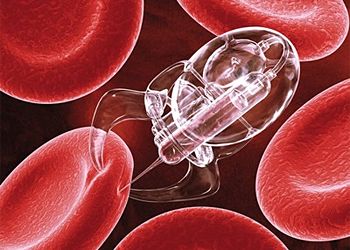by Larry
September, 2015Imminent Milestones?Television host and writer, Fareed Zakaria, and his team at CNN have come up with programs focusing on such questions, and the results are interesting. One can see some of their broadcasts by Googling "Moonshots for the 21st Century" and logging in at www.CNN.com/go or via a CNN iPad app. The stimulating videos might be worth one's time. Here are a few of the developments suggested by Zakaria or other futuristic thinkers: 1. Discoveries in brain science could soon provide new realms of mental and emotional functioning, learning, and personal exploration. Alzheimer's disease may in the next few decades be substantially controlled for
2. Successful controlling of nuclear fusion reactions (such as keep suns like ours hot for billions of years) would produce all the energy we need for the foreseeable future. Potentially there would be little further requirement for fossil fuels' generation of power and hence for their carbon-based pollution of our atmosphere, threatening more global warming. When I was a wee lad every several days eagerly perusing my "Weekly Reader," I learned that innovations of this sort, along with cities in bubbles and sidewalks that would move us along (so we need no longer walk or even ride the bus to get about), were just around the corner. Is nuclear fusion now really in the offing, or is this another teaser idea that actually will not come to fruition for quite awhile? Maybe those being born in this century really will experience this transformation. If so, it will surely be a huge deal. 3. While there will be continued vulnerability to global pandemics, like the influenza outbreak that caused widespread loss of life in 1918, in several instances diseases may soon be on the verge of eradication, at least regionally, including polio, malaria, measles, mumps, yaws, and rubella. Since in the U.S. there are only a few deaths from any or all of these, this may not seem so significant, yet in certain areas, for instance Africa and southern Asia, their near elimination would make a great and positive difference for the overall health of our species. 4. Human trips to Mars in less than twenty years are also suggested as looming on our time horizons. I have heard there is an ambitious NASA proposal to send people first to an asteroid by 2025, yes, only a decade from now. There are also much publicized Mars One projects to put crews of two men plus two women (Adams and Eves?) on the Red Planet, the first launch starting as early as 2024, expected to arrive about a year later. There were reportedly thousands of volunteers for these one-way Mars space voyages. People behave weirdly when for long periods they are in near isolation, virtually weightless, and in cramped settings. It is unknown if they will maintain their sanity, even if it is physically possible to get them to the next rocky world in a condition permitting useful work once there. Upon arrival, and assuming they survive the complicated atmosphere transit and landing on Mars' rocky surface, what are folks expected to do while stranded there for the rest of their lives? Unless robot factories can produce supplies in advance, presumably they would need to quickly start farming, for the food and air that plants might provide, and mining, at least for the Martian water with which to quench their thirsts and irrigate the vegetation. Scientific experiments no doubt could occupy them for awhile beyond that. Also there would be computer communications with Earth and digital games, so long as power supplies last. These individuals would need to be introverts, I would imagine. "People who need people" (and "are the luckiest people in the world") probably would not volunteer for one-way trips to an otherwise empty planet.
In my view, unmanned scientific and exploratory missions by NASA are far more cost-effective and likely would produce vastly greater amounts of data. There is even the remote possibility they might within the natural lifetimes of some of us locate rudimentary forms of life elsewhere in the Solar System, and that would be extraordinary. 5. Medical breakthroughs hold promise over the next few decades. By 3-D printing and other means, personalized organ transplants may relatively soon be possible. Targeted cancer therapies are likely to allow more specialized care for each patient, decreasing treatment side-effects and increasing the chances for cures even in types of carcinoma that previously were considered death sentences. Human tissues grown from stem cells and with essentially a perfect match to the individual may be kept in case of need and used to repair or replace one's original organs. Nanomedicine could have enormous uses before long in more efficient drug delivery, cancer treatment, regeneration/replacement of body parts, diagnostics, gene therapy, biomimetics, surgical textiles, hernia repair, cellular level interventions, blood replacement, anesthesia, tissue engineering, neutralizing of drug overdoses, and much more. Bionic limbs, already well advanced for use with amputees, are likely to see such additional developments that in some cases the replacements can rival the functioning of the originals. The triggers for aging in human cells might be adjusted, permitting increases in the average lifespan. Of course, for this to be widely beneficial there would have to first be solutions to the problem of overpopulation. |

